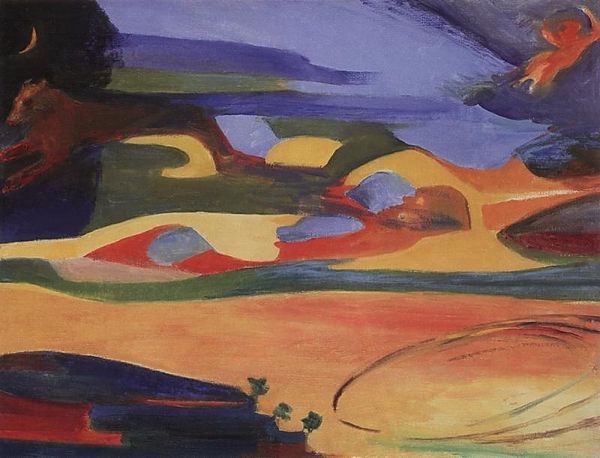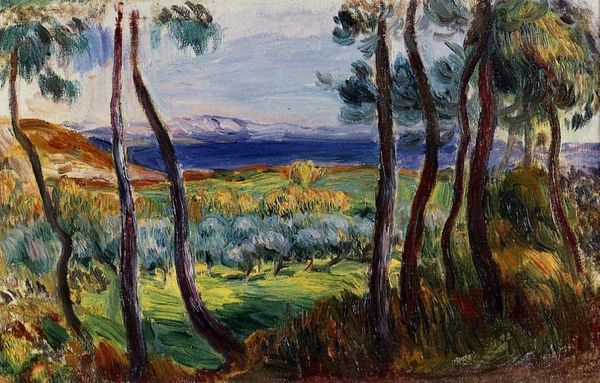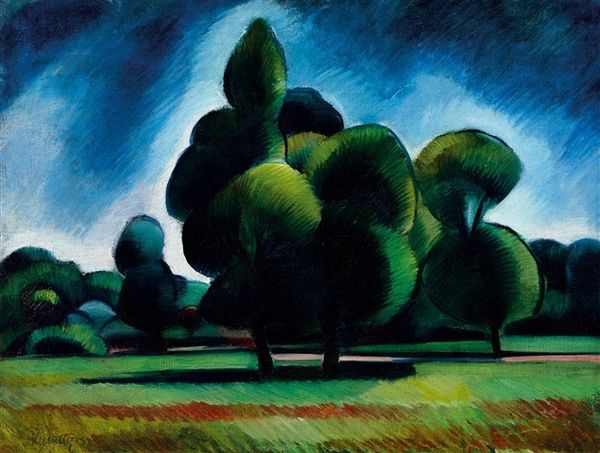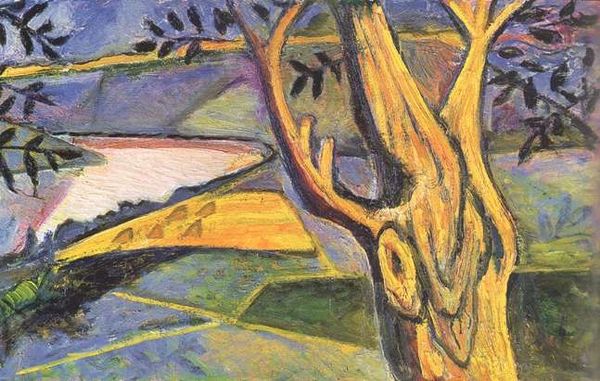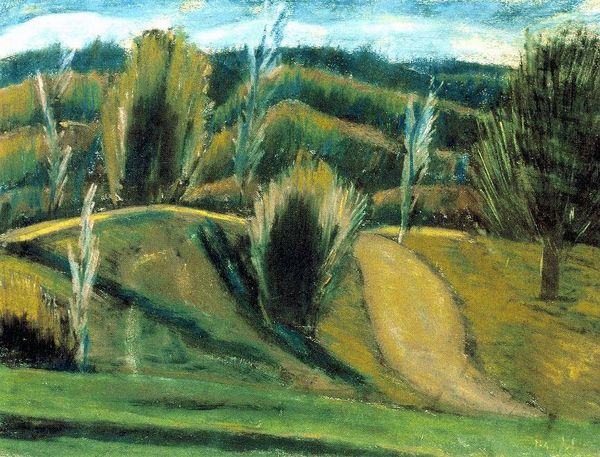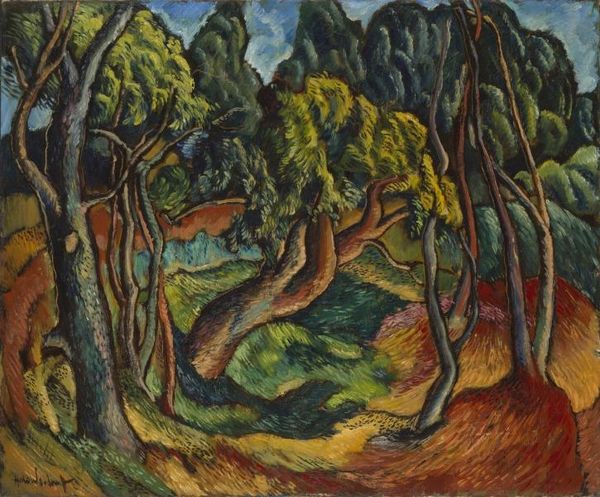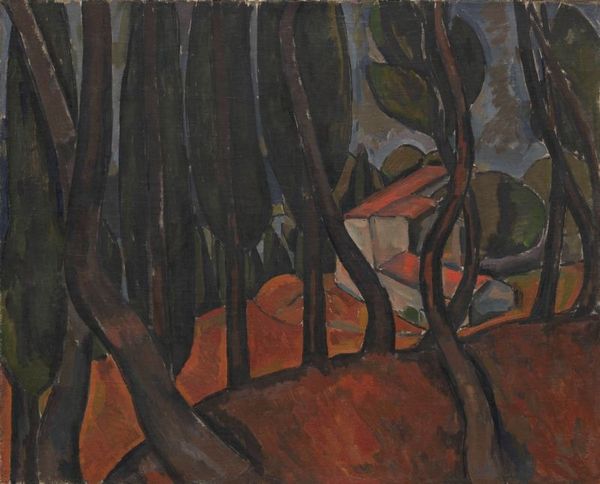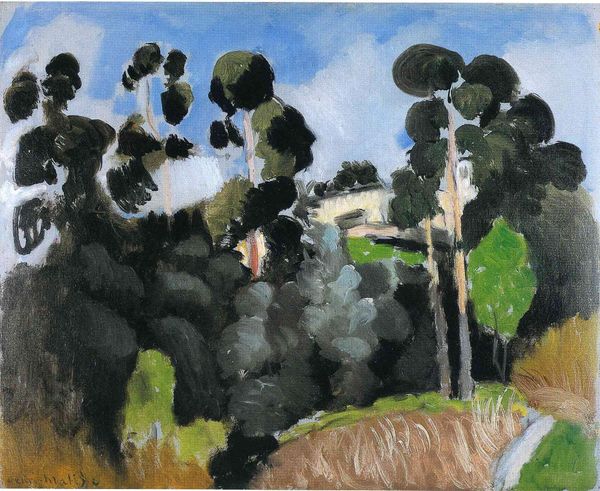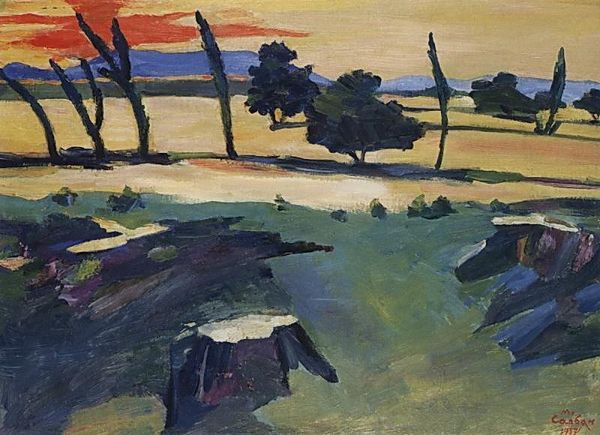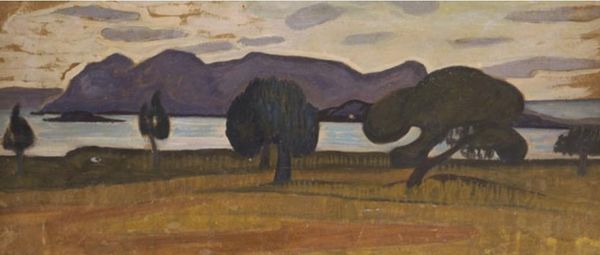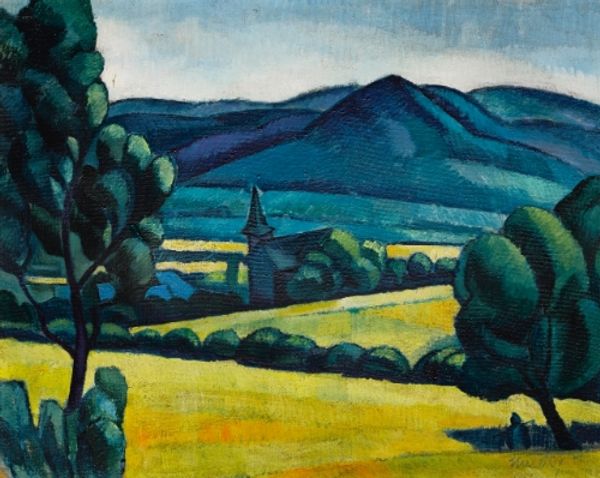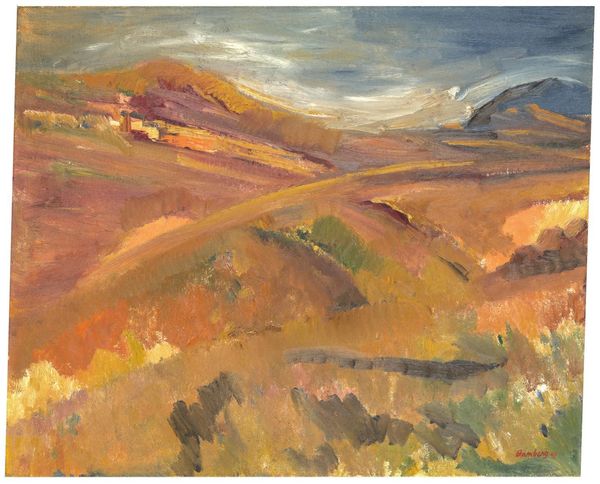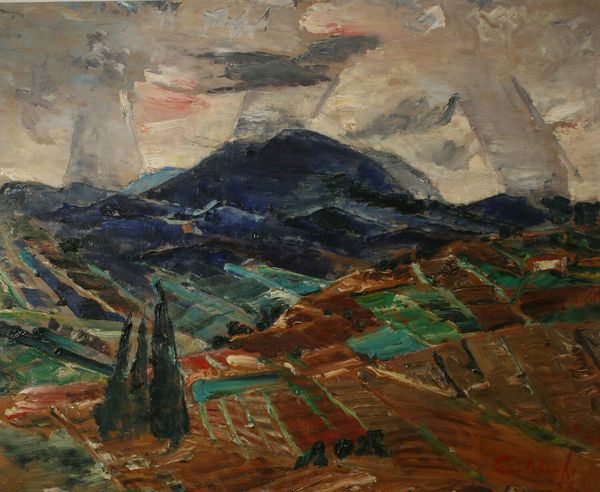
painting, oil-paint
painting
oil-paint
landscape
oil painting
expressionism
expressionist
realism
Copyright: Public domain
Curator: Right, let’s talk about Marsden Hartley’s "Landscape, New Mexico," painted in 1923 using oil paint. What do you see when you look at this piece? Editor: Hmm, immediate reaction? A winding, almost fleshy path dominates the foreground. The palette feels strangely muted, not quite the vibrant Southwest I expect. It evokes a sense of quiet anticipation or maybe suppressed anxiety. Curator: I can see that. The composition emphasizes these rhythmic, winding forms. Note how Hartley uses complementary colors—the oranges and blues—to create visual tension. And then these monolithic, dark green... almost sculptural masses in the front. Do these add to the suppressed anxiety you mentioned? Editor: Absolutely! They loom there. Almost like silent watchers, adding a weight to what might otherwise be a pleasant road trip scene. It is really strange but captivating too, don’t you think? Like a postcard from a dreamscape? Curator: In a way, yes! I wonder how we might consider the way that this work relates to a general move within modern art to try and reveal essential qualities of color and composition that had always been hidden beneath narrative and representation. Like Cezanne who would paint the same mountain again and again to try to render this singular experience and extract the raw, expressive content embedded within it, rather than to achieve representational accuracy. What would it mean if we were to extract such qualities and then re-insert them into an emotional state like the sense of being watched? Editor: That’s so interesting. Thinking of extracting expression out of the physical landscape... you're hitting on something for me, because I'm really fascinated by those big cloud formations too. They seem to be looming just like the shapes in the foreground, only this time, it gives me a sense of serenity—like being comforted. Curator: Funny, how we can respond so differently. For me the clouds are too smooth, and these large foreground elements are not particularly evocative or reminiscent of actual geological forms, creating a sense of disjuncture between realism and some other quality... abstraction perhaps? Editor: Yes exactly! Maybe this hints at why this landscape work is often categorized as being partly influenced by Expressionism... The perspective’s skewed. The palette choices are unexpectedly moody. I definitely feel more unsettled the longer I look. I find myself sinking deeper and deeper. What do you take away after really spending some time with it? Curator: I keep thinking about Hartley's state of mind during that period of his life. There's an intensity, a loneliness maybe, baked into the canvas, and how formalism relates to abstraction and how these are connected. That idea keeps echoing.
Comments
No comments
Be the first to comment and join the conversation on the ultimate creative platform.
